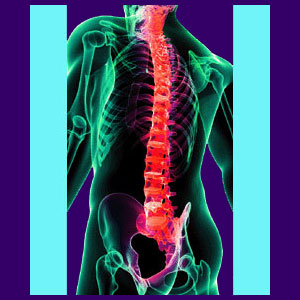
Chronic back and neck pain is a killer combination of long lasting symptoms in multiple spinal sections. Some patients have simultaneous symptoms in 2 or more regions of their backs, while others have alternating symptoms which move from one location to another. This type of combination pain is rarely due to a singular physical cause, unless the patient has suffered from some extreme trauma. The most common sources of simultaneous and alternating symptomatic conditions include widespread and extreme spinal degeneration, disease process and psychological back pain syndromes typically enacted by regional ischemia.
This dialog provides guidance on dealing with combination back and neck pain concerns of a chronic, treatment-defiant nature.
Chronic Back and Neck Pain Locations
The most common form of chronic neck and back discomfort is primary and secondary pain zones in the lumbar and cervical regions. One region is usually in constant grievous pain, while the alternating symptomatic location comes and goes with less severity. Often, the misery in the primary area improves when the secondary regional pain kicks in. The locations of these 2 pain zones can vary to any region of the back. They can also vary to include other non-back pain conditions, including a variety of psychologically induced pain syndromes.
Some patients must endure constant severe pain in 2 or more regions of the back and neck. Once again, the pain can be in any 2 or more regions simultaneously, with the lumbar and cervical areas being the most common. However, cervical and thoracic pain is also possible, as is lumbar, thoracic and cervical.
Chronic Neck and Back Pain Causes
It is much harder to blame these widespread and diverse symptoms on a single anatomical source. These painful complaints are often linked to a general process, such as spinal arthritis, compared to a location specific cause, such as a herniated disc. Although many arthritic processes do affect large areas of the spine, the symptoms often do not correlate to the clinical expectations. Many patients are obviously affected by nerve or muscle pain which can not be definitively linked to even the most severe arthritic processes.
More recently, the diagnosis of fibromyalgia is a popular explanation for pain in multiple areas of the body at once. However, this is not saying much, since the condition is really just a name which is loosely defined by diagnostic criteria and has no known effective or universally accepted treatments. Many doctors simply view FMS as a form of chronic pain which may be physically, chemically or emotionally-induced. We find the diagnosis applied to many people who have pain which defies doctors’ experience and is therefore categorized illogically, rather than deemed to be idiopathic so that it can be treated profitably.
Chronic Back and Neck Pain Combinations
There is a good chance that these combination back and neck symptoms have been diagnosed as coming from 2 independent causes. Often, spinal abnormalities in the 2 affected regions will be blamed for causing the recurrent or continuous symptoms. This is rarely the truth, since the conditions are interactive and often change in response to one another. It is far more likely that both pain syndromes originate from a singular causative source. This source is rarely structural and most patients with dual or tri-zone pain soon realize that physical treatments rarely do their symptoms much good. In these cases, disease processes must be ruled out and the possibility for psychogenic symptoms investigated. Patients who do suspect an emotional or stress-related causation may find relief using knowledge therapy.




